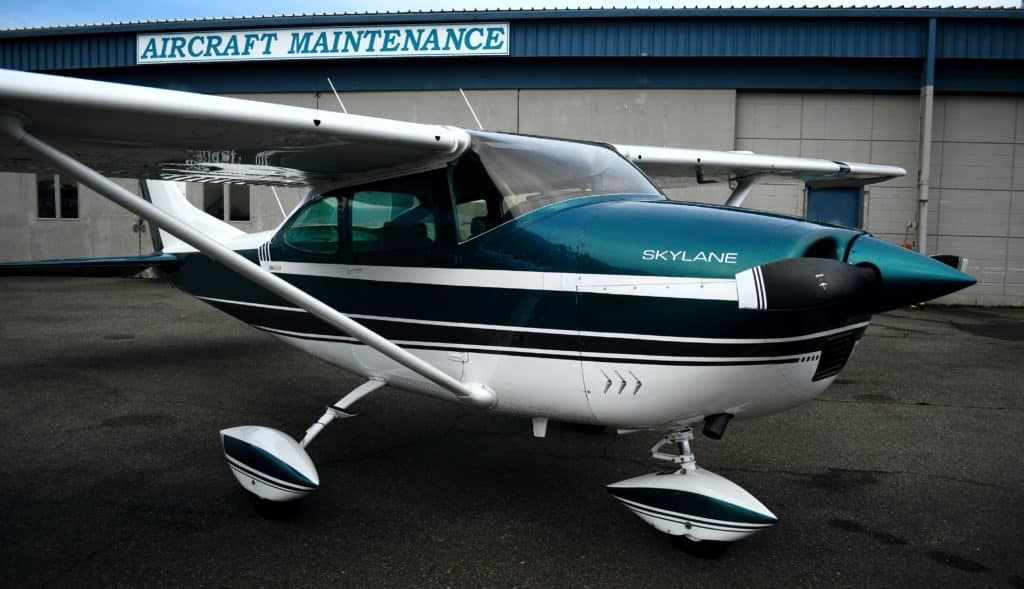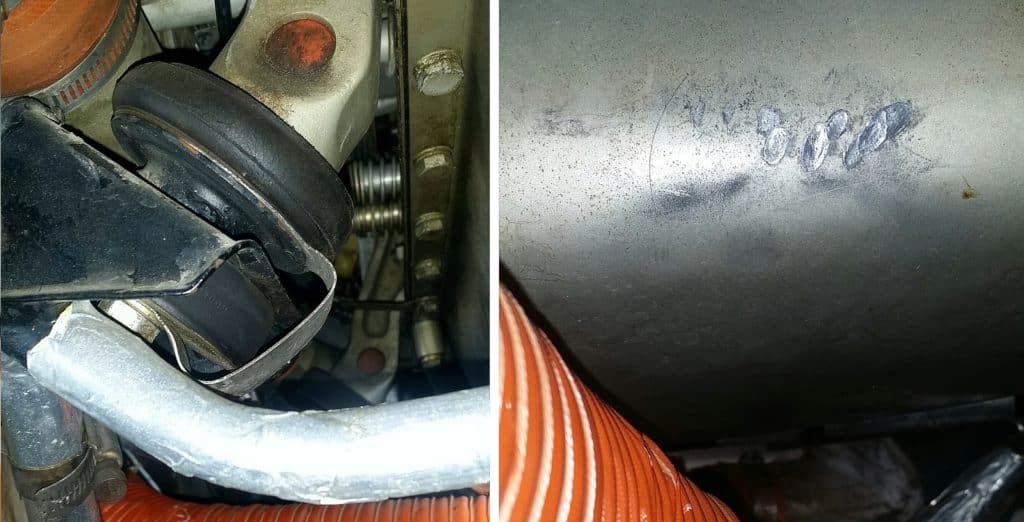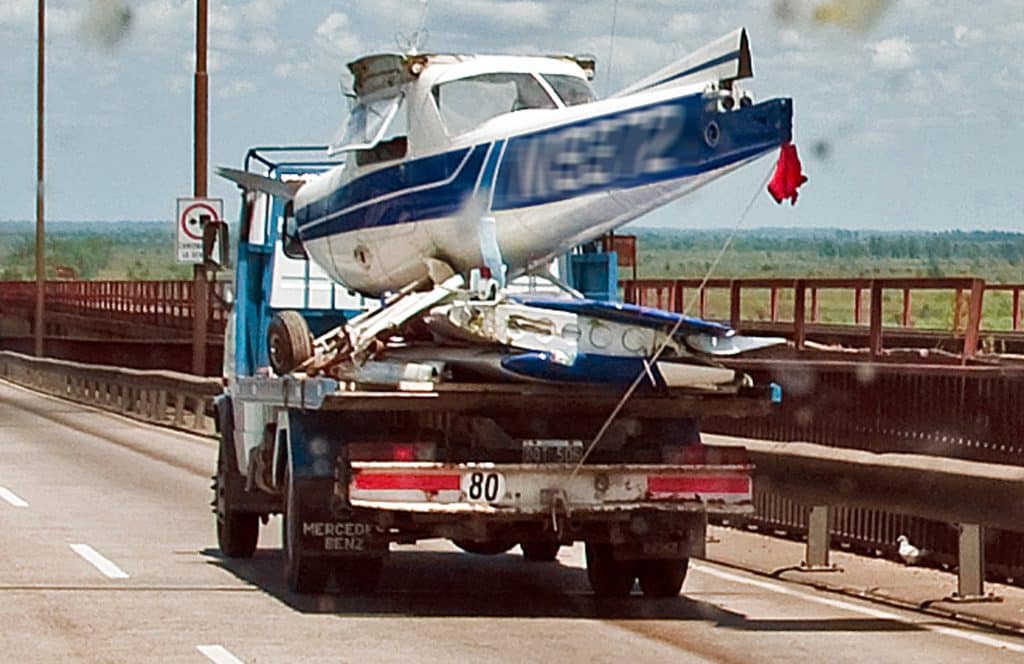What happens when an owner and an IA can’t agree?
By Mike Busch

Sam is a pilot, engineer and serial entrepreneur who lives near Washington DC. About 10 years ago, he bought a 1966 Cessna 182J Skylane that is based and maintained in nearby Maryland. It’s been a pretty economical airplane to operate and maintain. Sam’s IA charges a flat-rate of $1,200 for the annual inspection, and Sam told me that “I’ve never paid more than $3,300 for an annual inspection plus repairs.”
About a year ago, Sam flew his airplane to the West Coast on business. While there, the Skylane’s annual inspection came due. Sam decided to take his plane to a well-known California shop—let’s call it “Alpha Aviation”—for the inspection. Because of the airplane’s benign maintenance history, Sam didn’t anticipate any big surprises. Imagine his shock when Alpha Aviation sent him an 11-page preliminary discrepancy list itemizing 63 discrepancies, 40 of which were identified as “affecting airworthiness status.”
Inspection Findings
Ten of the 40 airworthiness discrepancies involved compliance with Airworthiness Directives. Some of these were routine recurrent inspections—seat tracks, ignition switch, oil filter adapter, fuel filler caps, flap actuator jackscrew—that would be expected in any Cessna 182 annual inspection. Others, however, were one-time ADs that should have been complied with years or even decades ago, but for which the logbooks included no evidence of compliance. (If an IA can’t find evidence that an AD was complied with, he has to assume that is hasn’t.)
The paperwork issues were not confined to AD compliance. The airplane had numerous STC’d alterations for which no Form 337s could be found. Alpha Aviation ordered a CDROM from the FAA Records Branch in Oklahoma City to learn whether the Form 337s had ever been submitted to the FAA.
The inspection revealed fuel leaks at the wing roots, apparently coming from the fuel quantity sending units. In addition, the left upper forward and aft wing root fuel lines were leaking into the cabin, something that had apparently been going on for some time because there were fuel stains visible on the cabin headliner. Fixing these leaks was going to be a labor-intensive task. Alpha’s IA was apparently concerned enough that he had the airplane defueled. He was also concerned that removing the old, stiff headliner to gain access to the leaking fuel lines might damage the headliner irreparably.
This preliminary discrepancy list from Alpha Aviation didn’t include any cost estimates, but there were a number of airworthiness discrepancies that would clearly be expensive ones to repair. The engine vibration isolators were so worn—and the engine had sagged so far—that various engine components were rubbing against the lower cowling. In fact, the engine’s oil sump had chafing against the a length of wire-wound air duct that ran beneath the engine, and the oil sump was so deeply gouged that the IA felt in-flight failure and loss of engine oil was a real possibility. Fixing this would require hoisting the engine and replacing the sump and the shock mounts.

The discrepancy list indicated that the exhaust system was in bad shape and would need extensive repairs. However, the cylinder exhaust studs were so badly corroded that the IA was worried that some of them might break off in the process of removing the exhaust system, which might necessitate removing cylinders and sending them out for repair. In other words, this could get messy.
There were other expensive-sounding discrepancies listed. The left main landing gear leg was found to be loose in the airframe attach fitting and would need to be removed (a nasty and labor-intensive job) so that the attach fitting and hardware could be repaired or replaced. The copilot-side upper cabin door hinge was cracked and in need of replacement. Literally every control cable tension was too low, and the elevator trim cables were misrouted. Chafing was found almost everywhere you looked. The primer fuel line was tie-wrapped to an electrical harness, which is a big no-no. All the wheel bearings and races were badly scored and in need of replacement. The brakes were spongy. The shimmy damper was leaking and had lost its fluid. The list went on and on.
The Great Debate
Sam was floored. Obviously all these problems could not have developed in the past 12 months. That left two possibilities: Either Sam’s mechanic in Maryland had been pencil-whipping his annuals, or the California shop was being grossly overzealous. Sam trusted his IA back home and told Alpha Aviation in no uncertain terms that he had no intention of approving many of the repairs Alpha felt were necessary but Sam didn’t.
The debate between Sam and Alpha raged on for some months. Sam kept insisting that most of the discrepancies didn’t rise to the level of airworthiness issues. Alpha kept making it clear that they would not be able to sign off the annual as airworthy unless they were all addressed. Sam asked for detailed estimates of what each of the discrepancies would cost to resolve. Alpha said it would take them some time to work up such estimates.
Then something happened that Sam didn’t see coming: Alpha Aviation informed him that the shop would be shutting down permanently and would not be able to perform any of the necessary repairs. They told Sam they would be signing off his annual inspection as unairworthy with a list of discrepancies. Alpha’s director of maintenance (DOM) recommended that Sam’s airplane be towed over to another shop on the field—I’ll call it Bravo Aircraft Services—to have the airworthiness discrepancies resolved.
Sam felt his hands were tied. By now he was back home on the East Coast and his airplane was 3,000 miles away. He agreed to have the plane moved to Bravo, and reluctantly paid Alpha its flat-rate inspection fee that was about twice what he was accustomed to paying back in Maryland.
Repair Estimate
Bravo reviewed the discrepancy list from Alpha, looked over Sam’s airplane carefully to assess the discrepancies and evaluate what parts and how much labor would be involved in repairing them. Considerable research was required to locate the necessary parts and determine what they would cost.
Finally, Bravo provided a detailed written repair estimate to Sam that had a bottom-line total slightly north of $20,000. Sam was not amused. He made it clear to Bravo that he had no intention of spending anywhere close to that much money. Bravo’s DOM proceeded to add fuel to the fire by suggesting that what Sam really needed to do is to replace his almost-at-TBO engine with a factory rebuilt one (for $35,000 plus installation labor) and to overhaul his way-past-TBO prop (for about $6,000). Those suggestions didn’t exactly sit well with Sam.
A long negotiation ensued, culminating is Sam reluctantly agreeing to have Bravo repair 30 of the 40 airworthiness discrepancies on Alpha’s discrepancy list, but declining repair of the remaining 10 discrepancies that Sam felt strongly were not really airworthiness items and should be deferred until after he got the airplane back home.
Bravo’s DOM had enough. He said that unless Sam authorized Bravo to repair all 40 airworthiness discrepancies, Bravo would refuse to repair any of them. Bravo’s position was that they didn’t want to be in the position of aiding or abetting Sam to commit the violation of flying his airplane to the East Coast in in an unairworthy condition.
Sam was furious. He instructed Bravo to close up the airplane and tow it to a storage hangar at the FBO on the field. Bravo said they’d be delighted to do that. Sam asked Bravo if they would at least help him get a ferry permit to fly the airplane to another shop 15 minutes flying time away. Bravo said they would have no part of that and told Sam they thought there was virtually no chance that the local FSDO would be willing to grant a ferry permit. (For one thing, when you apply for a ferry permit, the FSDO’s first question is usually “are all applicable ADs complied with?”)
In desperation, Sam called his mechanic in Maryland, explained his predicament, and asked if the mechanic would be willing to fly to California all expenses paid and help Sam obtain a ferry permit. The Maryland mechanic called the Bravo DOM to hear his side of the story, after which the mechanic informed Sam that he didn’t think he’d be able to help.

Last I heard, Sam was looking into the possibility of having the wings removed from his Skylane, crating it, and trailering the airplane back East. That would be an unhappy ending for sure, but might be Sam’s best option under the circumstances.
What’s Wrong With This Picture?
This was a horrible outcome, and there’s a lot of blame to go around. It seems to me that Sam’s Maryland mechanic set the wheels in motion up by performing one-eye-closed annual inspections and enabling Sam to defer so much important corrective maintenance. You can get away with that sort of thing for awhile, but eventually it always catches up with you.
It’s hard to fathom what possessed Sam to have his annual inspection done by a shop he’d never used before located 3,000 miles from his home base and without doing sufficient due diligence to learn that the shop was on the brink of going out of business. Bad idea! By doing that, Sam really painted himself into a corner.
I think that Bravo’s DOM acted unreasonably and unprofessionally when he gave Sam an all-or-nothing ultimatum. After all, Bravo was not being asked to perform an annual inspection on Sam’s airplane—that had already been done by Alpha—and was not being asked to take responsibility for the aircraft’s airworthiness—that was strictly Sam’s responsibility. In fact, I called Bravo’s DOM and told him as much. I suggested that the appropriate thing for Bravo to do would be to make the repairs that Sam requested (and only those), make and sign a logbook entry memorializing the work that Bravo did (with no mention of any work Bravo didn’t do), and then give Sam a letter formally notifying him of the discrepancies on Alpha’s discrepancy list that Bravo had not resolved and ask Sam to countersign a copy of the letter for Bravo to keep in its files.
Sam didn’t exactly endear himself to either Alpha or Bravo when he repeatedly questioned their professional judgment as to which discrepancies were airworthiness items and which could be prudently deferred. It is perfectly appropriate for an aircraft owner to question an IA’s discrepancy list and to attempt to negotiate a compromise—we do this all the time—but this is something that needs to be done with diplomacy, sensitivity and a light touch. Get too aggressive or confrontational and you run the risk that the shop no longer wants to deal with you or work on your airplane.
That’s what happened to Sam. Don’t let it happen to you.
You bought a plane to fly it, not stress over maintenance.
At Savvy Aviation, we believe you shouldn’t have to navigate the complexities of aircraft maintenance alone. And you definitely shouldn’t be surprised when your shop’s invoice arrives.
Savvy Aviation isn’t a maintenance shop – we empower you with the knowledge and expert consultation you need to be in control of your own maintenance events – so your shop takes directives (not gives them). Whatever your maintenance needs, Savvy has a perfect plan for you: